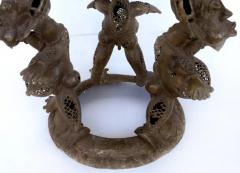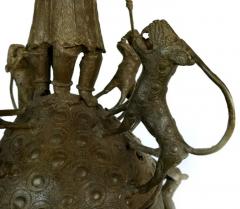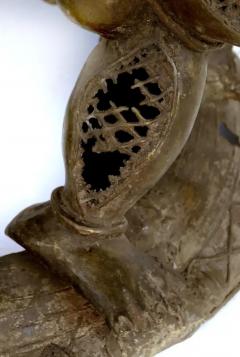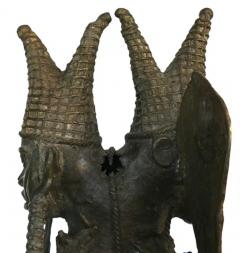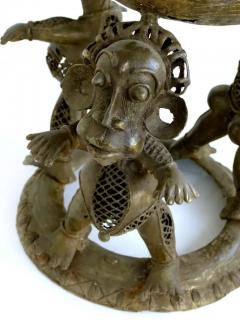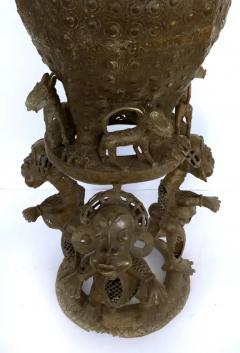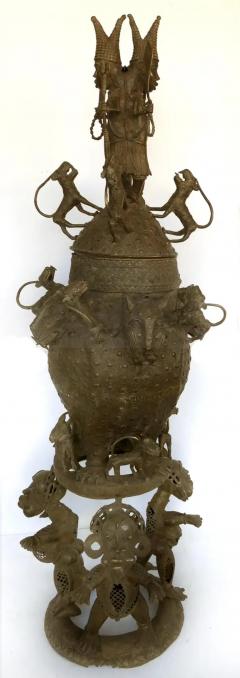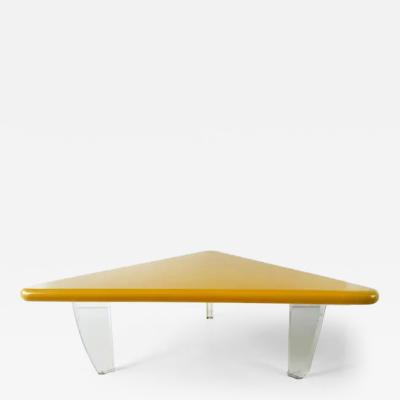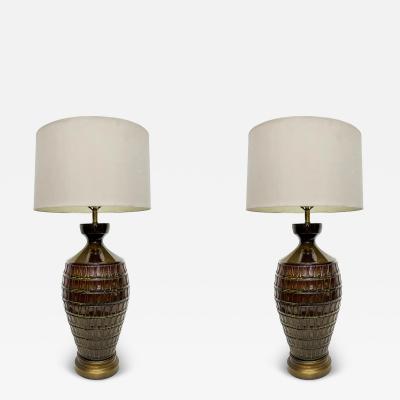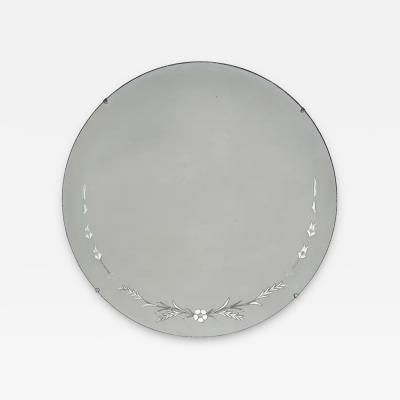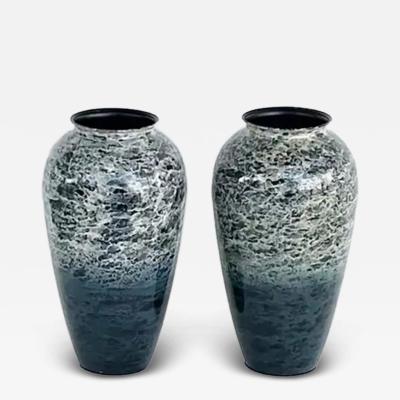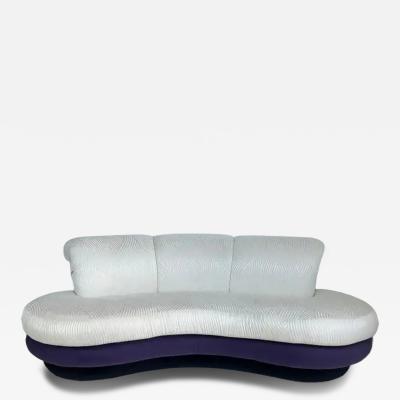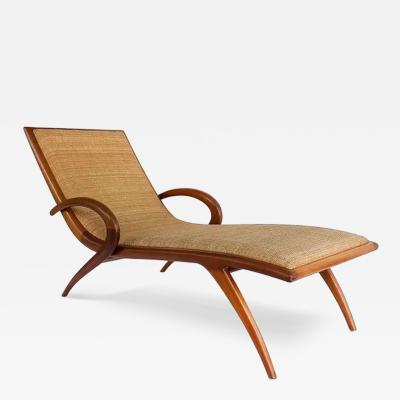- FINE ART
-
FURNITURE + LIGHTING
Shop By Category
Shop By Artist
- NEW + CUSTOM
- DECORATIVE ARTS
-
JEWELRY
Shop By Category
Shop By Artist
- INTERIORS
- MAGAZINE
Offered by:
Iconic Design Gallery
8650 Biscayne Blvd., Suite 6
Miami, FL 33138 , United States
Call Seller
305.606.7757
Showrooms
Benin ‘Nigeria’ Bronze Figural Offering Depicting Leopards and Tribesmen
$ 16,000
-
Tear Sheet Print
- BoardAdd to Board
-
-
Description
Mid-20th century Benin (Nigeria) bronze figural offering depicting leopards and tribesmen
Offered for sale is a modern-day Benin (Nigeria) bronze figural offering depicting leopards and tribesmen. The modern-day Nigerian people have created cast replicas of those original bronzes.
The original Benin bronzes are a group of more than a thousand metal plaques and sculptures that decorated the royal palace of the Kingdom of Benin in what is now modern-day Nigeria. Collectively, the objects form the best known examples of Benin art, created from the 13th century onwards, by the Edo people, which also included other sculptures in brass or bronze, including some famous portrait heads and smaller pieces.
In 1897 most of the plaques and other objects were looted by British forces during a punitive expedition to the area as imperial control was being consolidated in Southern Nigeria. Two hundred of the pieces were taken to the British Museum, London, while the rest were purchased by other European museums. Today, a large number are held by the British Museum. Other notable collections are in Germany and the USA.
The Benin bronzes led to a greater appreciation in Europe of African culture and art. Initially, it appeared incredible to the discoverers that people "supposedly so primitive and savage" were responsible for such highly developed objects. Some even wrongly concluded that Benin knowledge of metallurgy came from the Portuguese traders who were in contact with Benin in the early modern period. In actual fact the Benin Empire was a hub of African civilization before the Portuguese traders visited and it is clear that the bronzes were made in Benin from an indigenous culture. Many of these dramatic sculptures date to the 13th century, centuries before contact with Portuguese traders, and a large part of the collection dates to the 15th and 16th centuries. It is believed that two "golden ages" in Benin metal workmanship occurred during the reigns of Esigie (fl. 1550) and of Eresoyen (1735–1750), when their workmanship achieved its highest qualities.
While the collection is known as the Benin bronzes, like most West African "bronzes" the pieces are mostly made of brass of variable composition. There are also pieces made of mixtures of bronze and brass, of wood, of ceramic, and of ivory, among other materials.
The metal pieces were made using lost-wax casting and are considered among the best sculptures made using this technique.
This example probably dates to the mid-20th century but incorporates all the characteristics of earlier pieces. The bronze does show casting flaws as shown. - More Information
-
Dimensions
H. 71 in; Diam. 23 in; H. 180.34 cm; Diam. 58.42 cm;
Message from Seller:
Iconic Design Gallery was established by Alberto Guerrero in 1991 and focuses on bringing to it's client's a wide variety of furniture, fine art, sculpture, lighting, decorative objects and hard to find pieces. We are the definitive source for interior designers in South Florida. We have a large inventory of eclectic pieces that we source around the world.
Sign In To View Price
close
You must Sign In to your account to view the price. If you don’t have an account, please Create an Account below.
More Listings from Iconic Design Gallery View all 757 listings
No Listings to show.
- Postmodern Triangle Coffee Table, Giovanni Offredi Saporiti Italia Style
- 1980s Biomorphic Side or Coffee Tables, Pair
- Overscale Glazed Mid-century Modern Ceramic Table Lamps, Pair
- Adrian Pearsall Brutalist Sculptura Buffet For Craft Associates
- Plycraft Norman Cherner "Pretzel" Bentwood Armchairs USA 1960s, a Pair, Signed
- Art Deco Style Round Etched Wheel Cut Glass Mirror c1940
- Matching Decorative Pair of Enameled Metal Vases
- Mid-century Modern Slipper Lounge Chairs, Edward Wormley for Dunbar Style
- Vintage Purple and Off-White Cloud Sofas after Pearsall, Per Item
- Roy Lichtenstein Pop Art Kiss Poster 1964 Original Ltd. #562
- Rare 1950s John Louis Graz Chaise Longue, Inset Woven Raffia
- Addis Ababa Ethiopian Wood Table Carved From 1 Piece of Wood, Late 20th Century
- Louis Lara Monumental Brueton Selina K Coffee Table, Stainless Steel
- Organic Modern Large Driftwood Coffee/Cocktail Table with 3/8" Glass Top


















